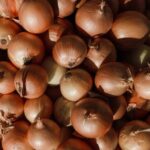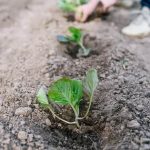Are you new to gardening and looking to start your own vegetable garden? In this article, we will provide you with essential first time vegetable gardening tips to help you get started on the right foot. From choosing the right location for your garden to harvesting the fruits of your labor, we’ve got you covered.
When it comes to first time vegetable gardening, there are a few key points to keep in mind to ensure a successful and rewarding experience. Whether you have a green thumb or are completely new to gardening, these tips will help you get your vegetable garden up and running in no time.
One of the most important aspects of starting a vegetable garden is choosing the right location. This includes considering factors such as sunlight, soil quality, and access to water. We will provide you with valuable insights into selecting the best spot for your garden, as well as how to prepare the soil for planting.
Additionally, we will guide you through selecting the best vegetables for beginners and offer tips for planting and caring for seedlings. Keep reading for all the information you need to kick-start your first time vegetable gardening journey.
Choosing the Right Location for Your Vegetable Garden
When starting your first vegetable garden, one of the most important decisions you’ll make is choosing the right location. The success of your garden will largely depend on its placement, so it’s crucial to select a spot that receives adequate sunlight and has good soil drainage. Here are some tips for choosing the perfect location for your vegetable garden:
- Consider sunlight: Most vegetables require at least 6 hours of direct sunlight per day. Look for a spot in your yard that gets ample sunlight, preferably in the morning and early afternoon.
- Check soil quality: The soil should be well-draining and nutrient-rich. You can perform a simple soil test to determine its pH level and composition. Alternatively, you can opt for raised beds or containers filled with high-quality potting mix.
- Access to water: Make sure the location is close to a water source, such as a hose or irrigation system. This will make it easier to keep your plants hydrated, especially during hot and dry periods.
In addition to these factors, it’s also important to consider convenience. Choose a location that is easily accessible from your house and doesn’t require too much effort to reach. By taking these aspects into account, you’ll be one step closer to setting up a successful vegetable garden.
Once you have chosen the perfect location for your vegetable garden, you can move on to selecting suitable vegetables to grow in your first garden. Remember that different vegetables have varying requirements in terms of sunlight, temperature, and space, so it’s essential to choose wisely based on your climate and available resources.
Lastly if you are not sure what type of vegetables thrive best in your area as a beginner gardener seeking advice from local gardening centers or nurseries can be beneficial as they often carry plants suited for specific regions and offer valuable insights into growing conditions. With the right location chosen and knowledge about which vegetables work best for beginners, you are well on your way to establishing a successful first-time vegetable garden.
Selecting the Best Vegetables for Beginners
When starting your first vegetable garden, it is important to select the right vegetables that are easy to grow and maintain. The key to a successful first-time vegetable gardening experience is choosing plants that are beginner-friendly and will provide a rewarding harvest. Whether you have limited space or a large backyard, there are plenty of options for beginners to consider when selecting vegetables for their first garden.
Easy-to-Grow Vegetables
If you are new to vegetable gardening, it’s best to start with easy-to-grow vegetables such as tomatoes, lettuce, carrots, and radishes. These vegetables typically require minimal maintenance and are forgiving to beginner mistakes. Tomatoes, for example, can be grown in containers or in the ground and produce a bountiful harvest with proper care. Lettuce also grows quickly and can be harvested multiple times throughout the growing season.
Space-Saving Options
For those with limited space, consider growing vegetables that are suitable for containers or small gardens. Some space-saving options include peppers, dwarf varieties of zucchini or squash, and compact cucumber plants. These vegetables can thrive in smaller spaces while still providing a satisfying harvest.
Low-Maintenance Options
If you have a busy schedule or limited time for gardening, choose low-maintenance vegetables such as beans, peas, or herbs like basil and mint. These plants require minimal care and attention but still offer fresh flavors to enjoy in your meals. Additionally, herbs can be grown indoors or outdoors and add aroma and flavor to your dishes without demanding much effort.
By selecting the right vegetables for your first-time vegetable garden based on your available space and level of commitment, you can set yourself up for a successful gardening experience. With careful planning and consideration of your individual circumstances, you can enjoy the process of nurturing your own fresh produce from seedling to harvest.
Preparing the Soil for Planting
When it comes to preparing the soil for your first time vegetable gardening venture, there are a few essential steps to take in order to create the best environment for your crops to thrive. The quality of your soil will directly impact the success of your garden, so it’s important to put in the effort at this stage.
Testing and Amending Soil
Before you start planting, it’s a good idea to test your soil to determine its pH level and nutrient content. You can purchase a DIY soil testing kit or send a sample to a professional lab for analysis. Once you know the status of your soil, you can amend it accordingly with organic matter, such as compost or well-rotted manure, to improve its structure and fertility.
Tilling and Aerating
After amending the soil, consider tilling or aerating it to loosen compacted areas and improve drainage. Tilling also helps in mixing amendments thoroughly throughout the soil. However, be cautious not to over-till as this can disrupt beneficial organisms and root systems.
Creating Garden Beds
If you’re opting for raised beds or traditional garden plots, now is the time to shape and define them. Ensure that your beds are no wider than four feet so you can easily reach across them without stepping on the soil. This prevents compaction which can hinder plant growth.
By taking these steps to prepare your soil properly before planting, you’ll be setting yourself up for a successful first time vegetable gardening experience. Remember that healthy plants start with healthy soil.
Understanding the Importance of Watering and Drainage
When it comes to first time vegetable gardening tips, understanding the importance of watering and drainage is crucial for the success of your garden. Proper watering and good drainage are vital for healthy plant growth and abundant harvests. Here are some important considerations to keep in mind:
- Watering: One of the most common mistakes made by first-time vegetable gardeners is overwatering. It’s important to water your plants deeply but less frequently, allowing the soil to dry out slightly between waterings. This encourages deep root growth and helps prevent diseases caused by overly wet conditions.
- Drainage: Good drainage is essential for healthy plant growth. If your garden soil doesn’t drain well, you can consider raised beds or adding organic matter such as compost to improve soil structure. Proper drainage ensures that plants don’t become waterlogged, which can lead to root rot and other issues.
In addition to proper watering and good drainage, it’s also important to consider the quality of the water you use in your vegetable garden. If your tap water is high in chlorine or other chemicals, consider using a filter or collecting rainwater for irrigation.
Overall, understanding the importance of watering and drainage is essential for first-time vegetable gardeners. By paying attention to these crucial factors, you’ll be better equipped to ensure the health and productivity of your vegetable garden.
Planting and Caring for Seedlings
Once you have chosen the right location and prepared the soil, it is time to start planting your seedlings. When it comes to first time vegetable gardening tips, this step can be both exciting and daunting for beginners. To ensure the success of your garden, it is important to handle your seedlings with care.
Start by gently removing them from their containers, being careful not to damage the roots. Then, dig a hole in the soil that is deep enough to accommodate the roots without bending or crowding them.
After planting your seedlings, it is crucial to provide them with proper care to help them thrive. One essential aspect of caring for seedlings is consistent watering. Keep an eye on the moisture levels in the soil and make sure not to overwater or underwater your plants. Additionally, you may need to protect your seedlings from pests and harsh weather conditions as they continue to grow.
As your seedlings develop into mature plants, regular maintenance such as pruning and fertilizing may be necessary to promote healthy growth. By following these first time vegetable gardening tips for planting and caring for seedlings, you can set yourself up for a successful harvest in your first season as a vegetable gardener.
| First Time Vegetable Gardening Tips | Planting and Caring for Seedlings |
|---|---|
| Gently remove seedlings from containers | Dig a hole deep enough for roots |
| Consistent watering is essential | Protect seedlings from pests and weather |
| Maintenance such as pruning may be necessary | Fertilize as needed |
Tips for Managing Pests and Weeds
Pests and weeds can be a major challenge for first time vegetable gardeners. However, with the right strategies in place, you can effectively manage these issues and protect your precious crops. Here are some valuable tips for managing pests and weeds in your vegetable garden.
First and foremost, it’s important to stay vigilant and monitor your garden regularly for any signs of pests or weed growth. Look for chewed leaves, holes in the soil, or wilting plants, which could indicate the presence of pests. Keep an eye out for any unwanted plant growth as well.
One effective approach to pest management is to encourage natural predators that can help keep pest populations under control. For example, you can attract beneficial insects like ladybugs, lacewings, and parasitic wasps by planting flowers such as marigolds and yarrow around your vegetable garden. Additionally, you may consider using physical barriers like row covers to protect your plants from pests.
When it comes to weed management, taking proactive measures is key. Mulching the soil around your plants can help suppress weed growth by blocking out sunlight and preventing weed seeds from germinating. Hand pulling weeds as soon as they appear is also crucial in keeping them from spreading and competing with your vegetables for water and nutrients. By implementing these pest and weed management tips, you can maintain a healthy and thriving vegetable garden that yields a bountiful harvest.
Harvesting and Enjoying the Fruits of Your Labor
As a first-time vegetable gardener, it’s important to remember that the real reward of your efforts comes when you finally get to harvest and enjoy the fruits of your labor. After all the hard work you’ve put into choosing the right location, selecting your vegetables, preparing the soil, caring for your plants, and managing pests and weeds, it’s time to reap what you have sown.
Harvesting your vegetables at the right time is crucial for ensuring that they are at their peak flavor and nutritional value. Be sure to do some research on the specific vegetables you have planted so that you know exactly when they should be harvested. This may involve checking for ripeness or testing their readiness by gently tugging on them.
Once you’ve harvested your vegetables, it’s time to enjoy them. There is nothing quite like the taste of fresh produce straight from your own garden. Whether you’re whipping up a salad with crisp lettuce and juicy tomatoes or sautéing zucchini and peppers for a savory side dish, the satisfaction of eating something you have grown yourself is unparalleled.
So savor every bite and take pride in the fact that you have successfully cultivated your own home-grown produce. Remember these tips as you continue to grow as a gardener and enjoy all the benefits that come with producing your own delicious vegetables.
Frequently Asked Questions
What Should I Put in My Beginner Vegetable Garden?
When starting a beginner vegetable garden, it’s important to choose easy-to-grow vegetables such as tomatoes, lettuce, carrots, green beans, and bell peppers. These vegetables are relatively low-maintenance and can thrive in various growing conditions.
What Vegetables Are Good for First Time Gardeners?
For first-time gardeners, it’s advisable to start with vegetables like tomatoes, zucchini, radishes, leafy greens (such as lettuce or spinach), and green beans. These vegetables are generally resilient and require minimal care, making them perfect for beginners.
What Are 5 Things You Should Do to Prepare a Good Veggie Garden?
To prepare a good veggie garden, there are several key tasks to tackle. First, you’ll need to choose the right location with ample sunlight and well-drained soil. Next, it’s essential to clear the area of any weeds or debris and then enrich the soil with compost or organic matter.
Additionally, planning out the layout of your garden and selecting the appropriate vegetable varieties are crucial steps in preparation. Lastly, make sure to have all the necessary gardening tools and equipment ready before getting started.

If you’re looking to get into vegetable gardening, or are just looking for some tips on how to make your current garden better, then you’ve come to the right place! My name is Ethel and I have been gardening for years. In this blog, I’m going to share with you some of my best tips on how to create a successful vegetable garden.





